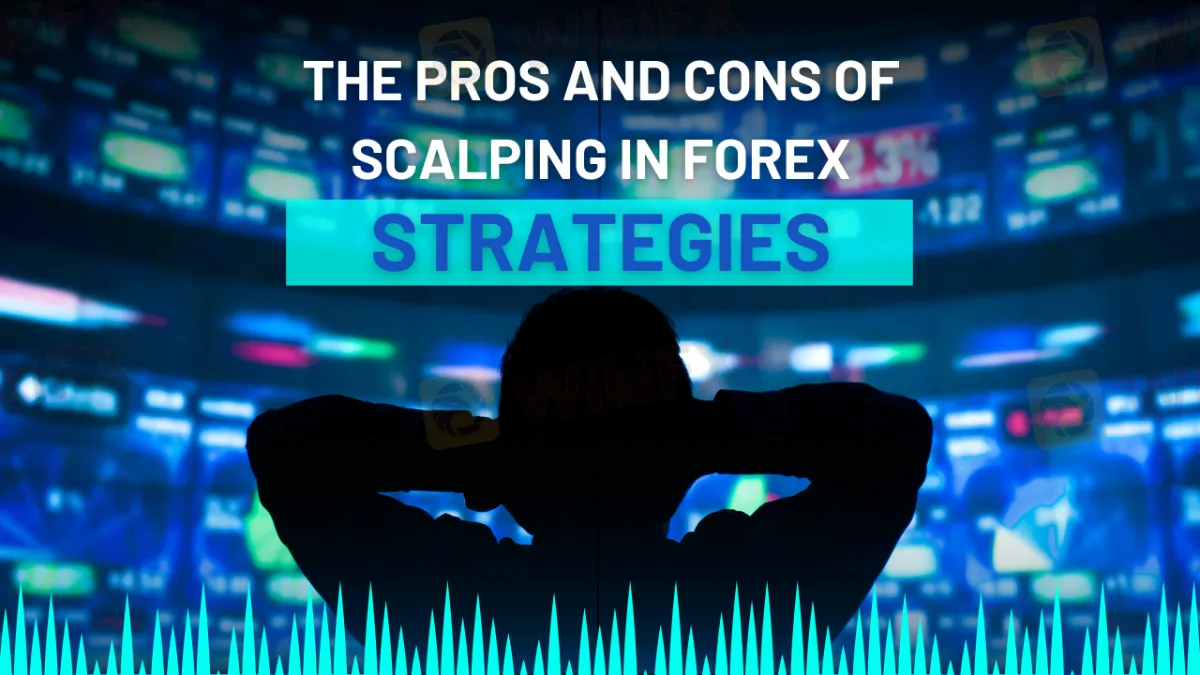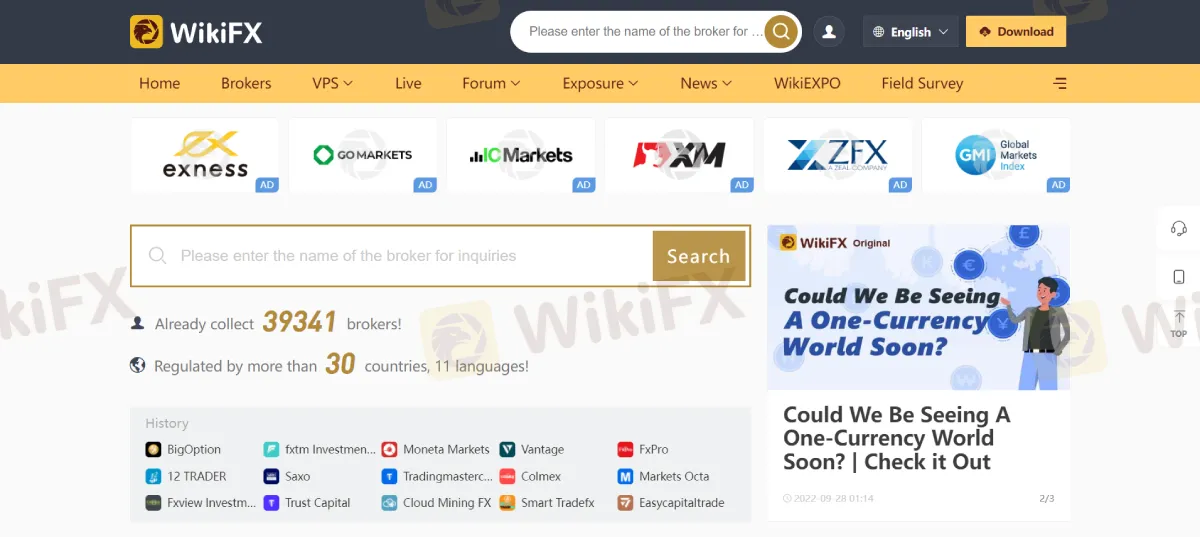简体中文
繁體中文
English
Pусский
日本語
ภาษาไทย
Tiếng Việt
Bahasa Indonesia
Español
हिन्दी
Filippiiniläinen
Français
Deutsch
Português
Türkçe
한국어
العربية
The Pros And Cons Of Scalping In Forex Strategy
Abstract:Scalping in the foreign exchange market involves trading in very short time frames. Fast and potentially exciting trading has its benefits and drawbacks. In this article, we will discuss forex scalping, how to include it in your overall strategy, and how to control your risk while doing so.

Forex scalping is a method of trading currencies on the shortest-period charts. It's a fast and possibly thrilling approach to trade that has advantages but also disadvantages. Continue reading to learn more about forex scalping, how to use it as part of a plan, and how to properly manage your risk.
What exactly is Forex scalping?
Scalping forex is making a high number of fast currency transactions in a short period of time in order to amass a series of modest gains.

While a position trade may last many months or even a year, and a swing trade may last a few days to a few weeks, a scalp trade lasts just minutes, if not seconds. This implies that scalp traders must always be completely focused on the chart and be able to respond to price swings in real-time. If a scalp trader does not concentrate in this manner, he or she may overlook potentially lucrative setups.
Scalping As A Forex Trading Strategy: An Overview
Forex scalping is the practice of purchasing and selling foreign currencies in order to benefit from changes in exchange rates. The international currency market is the world's biggest, with over $6.5 trillion traded across currencies on a daily basis. Traders and investors may take short-term positions in currencies and then record an offsetting deal. The difference between the original trade's exchange rate and the exit trade's exchange rate results in a gain or loss.
For example, if a US trader began a buy position in euros at the euro-to-US-dollar exchange rate of $1.1050 and subsequently sold the position at the rate of $1.1150, the profit would be 0.0100 or 100 pips or around 1%.
A forex scalping trading strategy may have a profit objective of as little as 10 or 20 pips. To maximize earnings, the scalper would start many transactions or increase the position size of each trade.

Scalping has become a feasible method for retail forex traders as a consequence of the low barriers to entry into the world of forex trading. Scalping is popular among newbies since it needs less market expertise and established trading ideas.
Because the forex market is vast and liquid, traders may readily enter and exit trading positions.
Scalping is an excellent option for people who dislike waiting for a deal to finish. Positions are often kept for a relatively short term, which reduces the likelihood of reversals that might impair a trading position.

It is vital to remember that the forex scalper often demands a greater deposit that can manage the level of leverage required by the investor to make the short and tiny transactions viable. Leverage is a kind of margin in which the trader borrows from the broker to increase the size of the position. Leverage, on the other hand, may compound both earnings and losses.
Profits are reduced on each deal, making it difficult to meet a trader's financial objectives. A “5-pip” deal yield may be inadequate for many traders.
Because of the modest amount of profit in each transaction, a single trading loss might wipe out the profits from numerous successful deals. Good transactions might have a risk-reward ratio of one to one or less.
Currency market volatility or extreme fluctuations may boost scalping gains and profits while also exacerbating losses. Forex scalping may be dangerous and result in the loss of a trader's brokerage account. For example, a trader may not have an exit plan or a stop-loss transaction that automatically unwinds the deal. If the transaction swings against the forex trader, he or she may suffer frequent and severe losses. As a consequence, newbies to forex trading should learn about forex scalping before making their first transaction.
About WikiFX
WikiFX is a platform for searching worldwide corporate financial information. Its primary duty is to give the included foreign exchange trading organizations basic information searching, regulatory license seeking, credit assessment, platform identification, and other services.

Over 39,000 brokers, both licensed and unregistered, are listed on the network. WikiFX's staff has been hard at work with 30 financial authorities from across the world to verify that the information supplied is factual and correct.
Stay tuned for more Educational Forex News.
Download the WikiFX App from the App Store or Google Play Store.

Disclaimer:
The views in this article only represent the author's personal views, and do not constitute investment advice on this platform. This platform does not guarantee the accuracy, completeness and timeliness of the information in the article, and will not be liable for any loss caused by the use of or reliance on the information in the article.
Read more

How to Know if the Market is Correcting or Reversing?
In trading, distinguishing between a market correction and a market reversal is crucial for making sound decisions. Misjudging one for the other can lead to missed opportunities or significant losses. While both involve price movements, their causes, duration, and implications differ substantially. Understanding these differences can help traders improve their strategies and adapt to market conditions effectively.

Empowering the Next Generation in Finance with WikiFX: Gen Z’s Investment Journey
With a steadfast commitment to fostering sustainable financial literacy and providing clear, strategic guidance to the next generation, WikiFX has collaborated with Van Lang University and Hoa Sen University to host an exclusive series of financial education workshops. This marks a pioneering initiative by WikiFX in Vietnam, designed not only to deliver foundational knowledge but also to instill a sense of responsibility and cultivate prudent financial decision-making among aspiring young traders.

Robinhood Launches Options Trading in the UK by 2025
Robinhood to introduce options trading in the UK by 2025 following FCA approval. Discover how this expansion aligns with Robinhood's strategy for global growth and new features.

What Impact Does Japan’s Positive Output Gap Have on the Yen?
The Japanese government has announced that, due to a tight labor market, the country’s economic output is expected to return to full capacity in the next fiscal year for the first time in seven years.
WikiFX Broker
Latest News
Why is there so much exposure against PrimeX Capital?
Russia to Fully Ban Crypto Mining in 10 Regions Starting January 1, 2025
Two Californians Indicted for $22 Million Crypto and NFT Fraud
Macro Markets: Is It Worth Your Investment?
WikiFX Review: Is Ultima Markets Legit?
Colorado Duo Accused of $8M Investment Fraud Scheme
What Impact Does Japan’s Positive Output Gap Have on the Yen?
RM62k Lost Investment Scam After Joining XRP Community Malaysia on Telegram
Victims of Financial Fraud in France Suffer Annual Losses of at Least €500 Million
SEC Warns on Advance Fee Loan Scams in the Philippines
Currency Calculator


